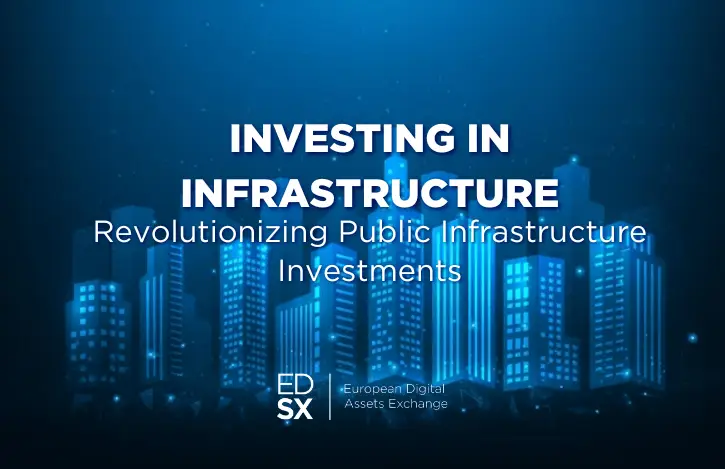In today’s rapidly evolving digital landscape, blockchain technology has emerged as a disruptive force with the potential to revolutionize various industries. One particular area where blockchain holds immense promise is infrastructure tokenization. By digitizing real-world assets and leveraging the power of distributed ledger technology, infrastructure tokenization on blockchain presents a unique opportunity to transform the investment landscape. In this article, we will delve into the current state and outlook of infrastructure tokenization, exploring its potential benefits, challenges, and implications for investors.
The Growth of Blockchain Technology
Since the inception of the Bitcoin network in 2008, blockchain technology has experienced exponential growth. With over 14,000 cryptocurrencies and tokens utilizing blockchain, the total market capitalization of crypto assets is nearing $2.9 trillion. While blockchain has primarily been associated with financial applications, including cryptocurrencies and decentralized finance solutions, its potential extends far beyond these realms.
Asset-backed tokens, which digitize real-world assets, have seen limited adoption thus far. However, a 2019 report highlighted the value of blockchain for infrastructure tokenization, exploring the digitalization of tangible assets and the emergence of start-up initiatives in this field. Notably, the World Bank issued the world’s first bond on the blockchain in 2018, named “bond-I,” demonstrating the practical use of distributed ledger technology throughout the bond’s lifecycle.
Benefits and Challenges
Infrastructure investment faces numerous challenges, such as poor governance, high capital requirements, together with the need to attract private financing. Blockchain technology offers solutions to these obstacles through enhanced transparency, fractional ownership, and efficient project financing and management. The core features of blockchain, including decentralization, immutability, and transparency, can improve the efficiency and governance of infrastructure projects.
However, it is important to note that private blockchains, like the one used by the World Bank, have limitations in terms of decentralization. Despite this, the potential for tokenization to democratize infrastructure and improve project management remains significant.
The Role of Distributed Ledger Technology (DLT)
Distributed Ledger Technology (DLT), of which blockchain is a subset, enables simultaneous access, validation, and record-keeping across multiple locations and entities. This technology can facilitate seamless coordination and collaboration among stakeholders involved in infrastructure projects, streamlining processes and improving efficiency.
Real-world Applications
Beyond the World Bank’s bond issuance, there are other notable examples of infrastructure tokenization on blockchain. For instance, in 2018, the city of South Burlington in Vermont, USA, became the first municipality to conduct a real estate tokenization project on the blockchain. This initiative aimed to increase liquidity and democratize investment in local infrastructure.
Infrastructure tokenization on blockchain can unlock liquidity in traditionally illiquid assets. By breaking down large infrastructure projects into digital tokens, investors can gain fractional ownership. They can also trade de these tokens on secondary markets, increasing accessibility and liquidity for both retail and institutional investors.
Smart Contracts and Automation
Smart contracts, which are self-executing contracts with predefined rules and conditions, play a crucial role in infrastructure tokenization. They automate contract administration, streamline payment processes, and also enable real-time resolution of changes to orders and claims. This automation reduces the need for intermediaries, minimizes paperwork, and enhances the speed and accuracy of transactions.
However, as with any emerging technology, infrastructure tokenization on blockchain raises regulatory considerations. Governments and regulatory bodies are actively exploring frameworks to ensure compliance. This it to overall protect investors, and mitigate risks associated with this innovative approach to infrastructure financing. Investors should stay informed about the evolving regulatory landscape to make informed decisions.
Potential for Global Impact
Infrastructure tokenization on blockchain has the potential to transcend borders and facilitate global infrastructure development. By enabling fractional ownership and efficient financing, blockchain technology can attract a broader range of investors. Among these, are those from different geographical regions. This increased participation can spur infrastructure development and address the global infrastructure investment gap.
In conclusion, infrastructure tokenization on blockchain has the potential to revolutionize the investment landscape. By digitizing real-world assets and leveraging the power of distributed ledger technology, blockchain can address the challenges faced by infrastructure projects, improve governance, and enhance financing options. Investors should embrace this transformative technology and stay updated on the latest developments and opportunities in infrastructure tokenization. The future of investment lies in the convergence of blockchain and infrastructure together with those who seize the opportunity stand to benefit from the potential rewards it offers.

Based in Zug, the platform is fully compliant with all Swiss laws related to financial intermediaries, banking, anti-money laundering, and organized trading facilities. Among its core values, there are innovative solutions through blockchain technology, which ensures security and liquidity.
EDSX is the first platform in Europe with primary and secondary markets for both institutional and retails. EDSX is a pioneering platform that employs the world’s leading technology to globally list security tokens in both primary and secondary markets, listing digital securities of real financial instruments to the public with a decentralized peer-to-peer exchange. Our goal is to fully engage every aspect of the financial revolution.
Do you have a question for us?
Send your query here:
[email protected]

